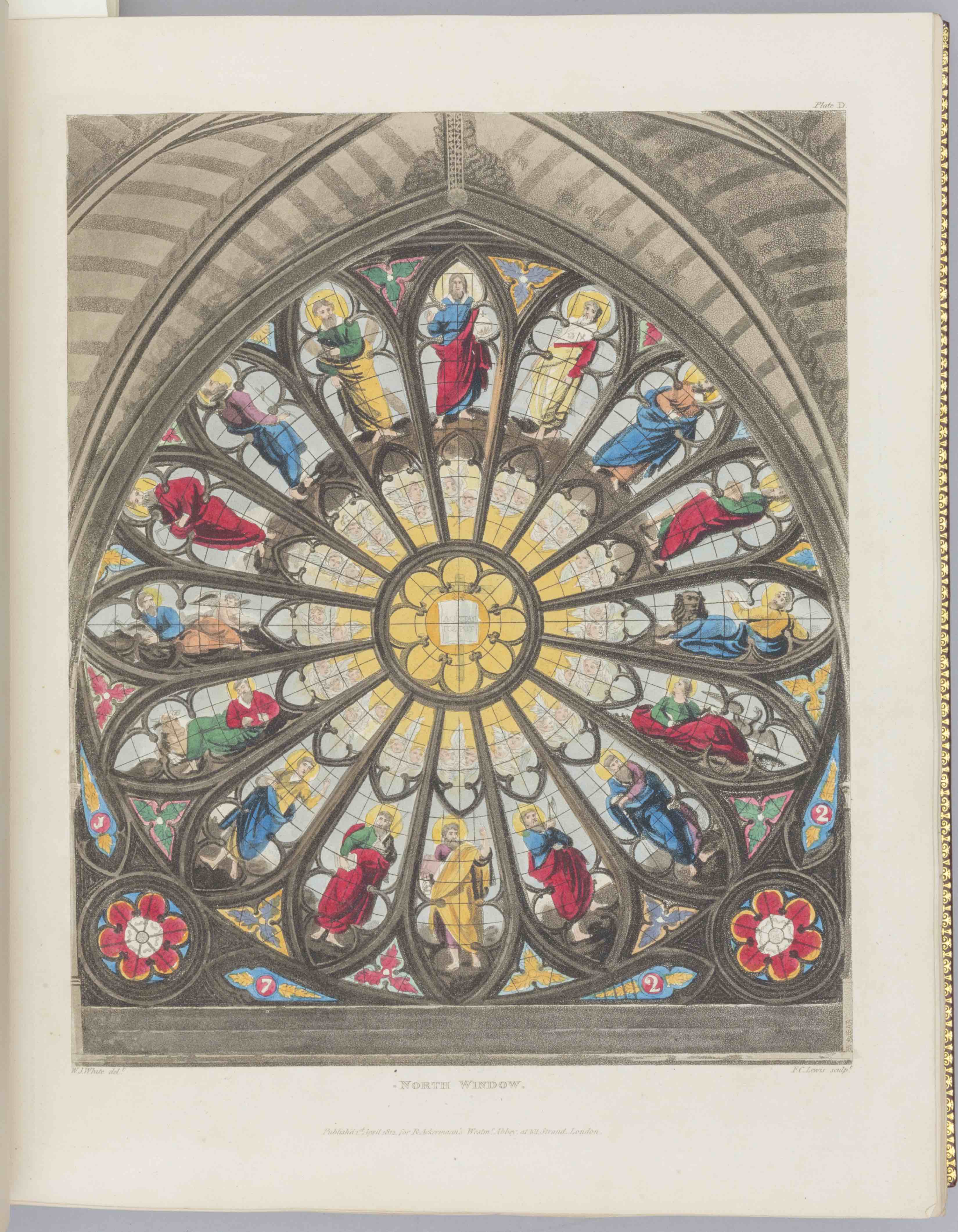
William Combe
London: R. Ackermann, 1812
[S.L.] IV [Ackermann – 1812] fol.
‘This vast and beautiful fabric, this scene of human grandeur’, as William Combe describes the London landmark of Westminster Abbey in this sumptuously illustrated folio, has been the setting for every coronation since 1066, and a church and Benedictine monks had been on the site before then. In its way the Abbey is, however, a product of the Reformation. In 1540 Henry VIII dissolved the monastery and made the Abbey into a Cathedral; he also established two masters and forty grammar scholars, the nucleus of today’s Westminster School. Mary I restored the Benedictine monastery in 1556; under Elizabeth I, however, Parliament gave religious houses revived under Mary to the Crown. Elizabeth removed the monastery and in 1560 refounded the Abbey as a Collegiate Church with dean and chapter, which as a ‘Royal Peculiar’ was exempt from the Bishop of London’s jurisdiction. The phrase ‘robbing Peter to pay Paul’ emanates from the sale of Abbey land for money to repair St Paul’s Cathedral following early Reformation iconoclasm there. A visible modern memorial of the Reformation is a stone commemorating Reformation martyrs near the tomb of Mary Tudor and Elizabeth I.